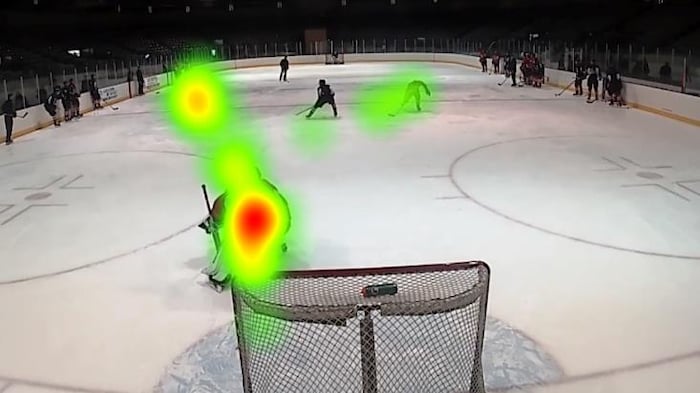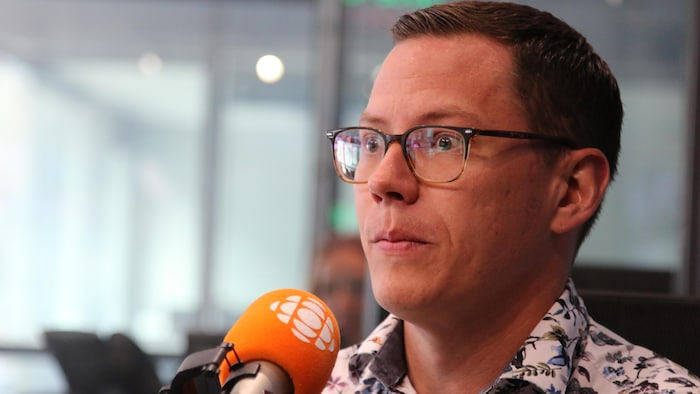The use of technology in the work of researcher Daniel Fortin-Guichard is reminiscent of the science fiction film Minority reportthe 2002 classic featuring Tom Cruise. The professor of McGill University does not however seek to prevent crimes, but rather to predict the fate of young hockey players.
In the spring, his colleagues and published him in the Journal of Sports Sciences A study to introduce a new tool that could help recruiters in the identification of talents.
They submitted players aged 15 and 16 to psychological tests to determine their ability to understand game sequences. Sensors installed on glasses allow them to detect where players pay their attention when presenting them a video sequence.
We are not trying to find out if the player will find the right game, we try to know what would do in this situation, details Daniel Fortin-Guichard. We are able to detect it because the eyes do not lie. Even in a stress position, the movement of the eyes is something involuntary. They will immediately look at what they deem relevant. And we will check how long they spend evaluating each aspect.
Infrared sensors act as Minicameras and take a photo of the retina every 8 milliseconds. It gives us practically in real time the player’s eye trip, explains the researcher. With this information, we are interested in the locations, in the order of fixings, the duration of the fixings and the number of fixings. These are our main metrics.

Example of an occlusion test
Photo: Photo provided by Daniel Fortin-Guichard
The results of these occlusion tests, as they are called, can then be analyzed to determine the optimal visual boss.
If, on a sequence, there are four areas that deserve attention and that a player only needs four fixings to target them, it is promising for the hockey
said the researcher.
The data obtained may then be made available to recruiters to refine their evaluation.
However, they cannot be part of the famous evaluation week (combine) of the NHLwhere hopes submit to a series of tests.
I would obviously have liked to see that there, but it was refused to us because it is considered a psychological test, and the association of NHL players does not allow any form of psychological tests in this context, says the researcher. But the teams individually could use them if they organize their own combine.

Daniel Fortin-Guichard
Photo : Radio-Canada / Xavier Gagnon
Overall, new technologies and artificial intelligence occupy more and more space in the departments of sports organizations, notes the expert. However, it is wrong if we judge that they will one day replace the detectors who will freeze their feet in neighborhood amphitheatres to find the rare pearl.
There is a trend in certain clubs to replace the scouts by models. It’s not the right way. You need your scientists. The tools have never seen a hockey match. These are just more tools in the arsenal of professionals
specifies the one who obtained his doctorate in psychology at Laval University.
Artificial intelligence is sexy, it seems to give answers, but it takes a critical look. This is where you have to be careful.
All this can only increase probability rates, he recalls, since recruitment remains partly a human science, and therefore inaccurate.
Certitudes in humanity, there are never. All you can do is increase the probabilities. Sometimes the probabilities are not even very high, but they are better than chance
he continues.
Yes, there is a little side ”sci-fi” To what we do, but we must do it with modesty. When I give a report, I always say “the model”, and not “mon Report “. We respect the figures, we never attribute them. We let the model speak, otherwise the teams tend to accuse the message wearer when it does not work. We have not promised anything, we do not predict the future. We try to help according to data
he said.
The one who worked with the Quebec ramparts compares his work to that of an actuary, in insurance. A profession which consists in modeling and anticipating risks and probabilities based on data.
We are therefore still far from the futuristic wall that agent John Anderton exploited in Minority reportthis classic from Steven Spielberg.

A painting allows you to see the future in the minority report film.
Photo: Promotional image of the film Minority Report (2002)
It is possible to beat chance with well -made scientific methods, and in the long term, but we will never have a perfect prediction
adds the one who is currently planning a new course on the identification of talents, which will be given for the first time in the Kinesiology Department of McGill University in the fall.
Will there be a question of elucidating the great mysteries of the hockey planet, namely why all the scientists were mistaken about the Alexandre Daigle and Nail Yakupov of this world?
For the moment, we are going to go there, and take an interest in those we missed, those who have passed under the radar, like Martin St-Louis, he replies. How is it that we have ignored them? Why were we not able to identify them?
In his course, the professor will also use a German study, published in 2017, on the identification of talent to defeat certain myths. We sometimes have the impression that the scientists, of which it is the job of evaluating sporting talent, are in a stratosphere completely different from the simple amateur, very close to the secret of the gods.
Jörg Schor is a renowned researcher in identification of talent. There are not many in our environment. And in 2018 he published a systematic review on the subject. And the study was really interesting, first to say that the scouts are not that bad. In 75-80 % of the time, they are right
indicates Daniel Fortin-Guichard.
There are many people who say: “Well let’s see (Jesperi) Kotkaniemi, it doesn’t make sense, it was sleeping with gas.” But they were right how many times in all? And we can ask ourselves the question, Kotkaniemi, it is established in the league. Is it a failed choice that much?
But the most interesting end of the study is a test they did in handball. They asked the general population to analyze players and asked the same thing from elite level coaches. And people of the 70 % general population were able to predict what level would reach the players. It was less good, but not bad either at all.
What give braid to the lists of amateur scientists who proliferate on the web for a few years, where everyone goes there with their own analysis of hopes before the draft.
One of the messages I am going to send to my students is: “Scientists are not that bad, and you are possibly better than you think”
he underlines.
The margin that separates professionals and amateurs perhaps only depends on hours of experience and access to resources, Daniel Fortin-Guichard believes.
The seasoned eye helps. THE “coach eye” seems to be an effective tool to predict sporting performance, but it has a ceiling, and a floor too, because the general population is also capable
he concludes.


